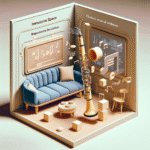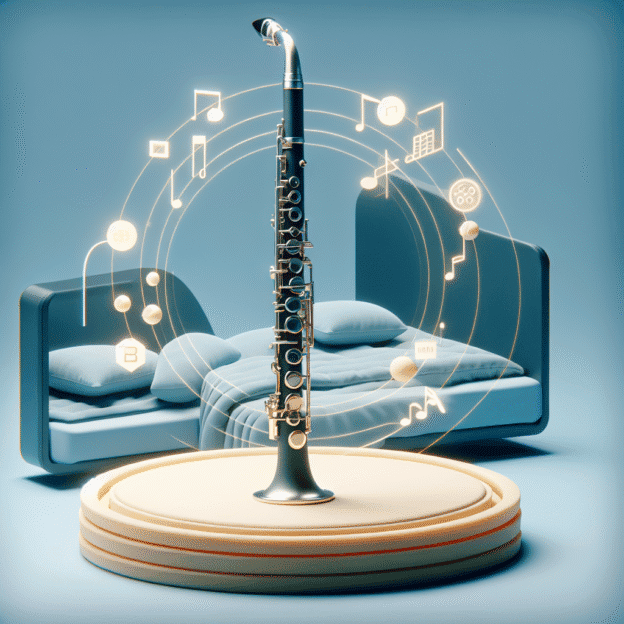The clarinet, with its rich tones and timeless appeal, has found a new place in augmented reality (AR). The blending of technology and music is captivating, as AR applications make their mark in the music world. But what does this mean for clarinet players? Whether you're just starting out, a professional, or somewhere in between, this new development is changing how the clarinet fits into the digital landscape.
Let's take a step back—why is AR such a game-changer for musicians? It mixes our physical surroundings with digital elements, offering interactive visual and audio feedback to improve our experiences. If you're thinking it sounds too complicated, don't worry. AR is actually quite user-friendly, and it's solving long-standing issues that clarinetists face.
AR and Clarinet Education: A New Way to Learn
Learning the clarinet has evolved, for better or worse. Picture yourself practicing with an app that shows you the right finger positions as you play. AR music education apps are making this sci-fi concept a reality. For beginners, these tools help master the basics quicker than flipping through old, dusty books. Imagine tutorials with fingering charts overlaid on digital clarinet models, taking away much of the confusion.
But it's more than just technique—it's about making practice fun and engaging. Think about AR platforms that let you play along with virtual orchestras or simulate accompaniments that blend with your clarinet. If a company like Martin Freres, known for their clarinets, got into AR education, they could combine traditional quality with cutting-edge tech. How cool would it be to mix old-school excellence with these new features?
| AR Feature | Benefit for Clarinetists |
|---|---|
| Real-time finger position guidance | Faster learning of proper technique |
| Virtual orchestra accompaniment | Enhanced practice experience |
| Interactive fingering charts | Easier understanding of note positions |
| Visual feedback on sound quality | Improved tone and intonation |
Performance Projection: AR on Stage
Live performances could be totally different with AR. Imagine a stage where visuals appear during your solo, or where the audience experiences a mix of your clarinet's smooth lows and exciting highs with stunning graphics. AR could seamlessly combine sound and visuals. It's not just for show; it makes the performance better for both players and listeners.
AR can also be practical during shows. How about sheet music that moves as you play? No more page-turners or awkward stand adjustments. For nervous beginners, AR could create a virtual concert to help with stage fright. The possibilities are as thrilling as nailing a high note on your first attempt!
Clarinet Maintenance and AR
Every clarinetist knows that instrument care is essential. From checking pads and keys to changing reeds, you can't skip maintenance. That's where AR steps in as your helper. Say goodbye to confusing repair guides. Some companies are creating AR tools that guide you through repairs with easy-to-follow visuals. Think about pointing your phone at your Martin Freres clarinet and having an app show you exactly how to fix a problem or replace a pad—no more guesswork.
Even experienced players who know their way around clarinet care can benefit from AR's efficiency. Tackling a tricky repair? AR overlays could be faster and less costly than trial and error. For those who care deeply about keeping their instruments in top shape, AR tools would be like having a knowledgeable assistant at your side.
The Digital Future of Clarinet Community
For many clarinetists, music is just as much about connecting with others as it is about playing. AR platforms could upgrade clunky video calls, allowing real-time jam sessions with players worldwide. Imagine sitting next to a friend, playing in perfect sync, even though you're on opposite sides of the world. AR could turn local practice sessions into global experiences, helping new players learn from experts or get feedback from bandmates in fun, new ways. Even masterclasses could go virtual, with teachers using interactive displays to instruct clarinet players.
Challenges and Considerations
With any new technology, it's smart to ask, “What's the catch?” Price might be the biggest issue for many musicians. High-end AR devices and software aren't cheap right now, but prices usually come down as technology spreads. Also, while tech-savvy players might pick up AR tools quickly, those less comfortable with apps might find it a bit challenging at first. But remember, we all started as beginners when we first picked up the clarinet, right?
It's also about finding the right balance between new tech and the heart of music. While AR can enhance our experiences, the true beauty of playing an instrument like the clarinet is the raw connection between you, the music, and tradition. Players shouldn't feel pressured to think AR is replacing skill or artistry—it's there to add to the experience, not take over. Let's face it: Martin Freres clarinets have been keeping tradition alive without needing fancy extras. A bit of new tech shouldn't change what it means to play one.
Are You Ready for It?
Who would have guessed the clarinet would be part of one of today's most exciting technologies? Seeing traditional craftsmanship—like what Martin Freres offers—mix with new innovations is exciting for both players and listeners. From changing how we learn clarinet to making performances more engaging and helping with instrument care, augmented reality is opening up new possibilities for clarinetists who want to explore fresh ways to experience their music.







